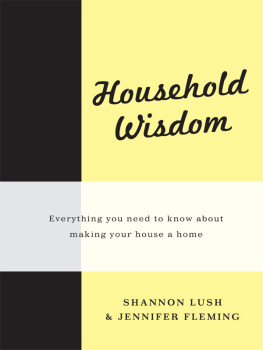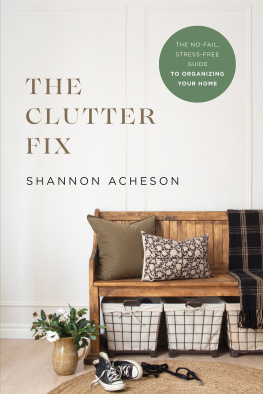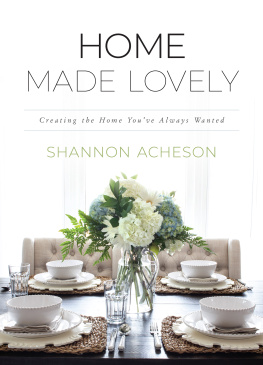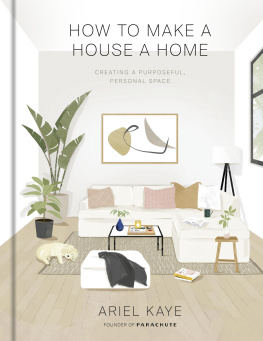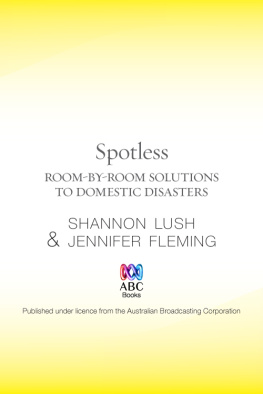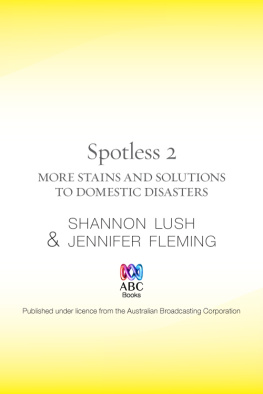The material in this book is intended for general information purposes only. It particularly is not intended to be used as a tool to diagnose or treat any physical conditions or to be seen as a substitute for medical advice. The authors and publishers recommend that medical help be sought in the event of any medical emergency by telephoning the emergency 000 number.
CONTENTS
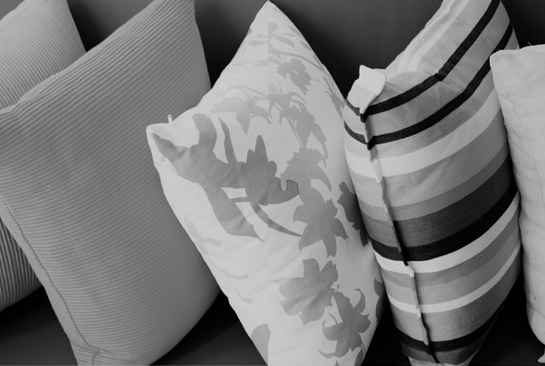
How To Be Comfy is about making your house a home. Your home could be filled to the rafters with loved items, or be completely minimalist. It could have bold feature walls or be subdued and plain. It could be filled with high-tech gadgetry, collectables or items from travels. It could be eclectic or themed. The important point is that you, and others under the same roof, are comfy.
Making a home comfy is about satisfying all the senses: its about the look, touch, smell, sound, taste and that often-elusive X factor. Its about elements like the colour on your walls, the feel of a mohair blanket, the fragrance of a bunch of flowers, the sound of your favourite music, the taste of a delicious meal or the feeling of warmth from a crackling fire on a cold evening. How to be Comfy will help you hone your senses to create a haven.
WHERE TO BEGIN
In How To Be Comfy we take you on a room-by-room guide through your home and offer a range of ideas for you to think about. Whether the design of your home is open plan or traditional, being comfy is about how it feels and looks, but also about how it operates. Theres no point in having a stunning-looking home thats impractical.
But before you rush out and buy paint or move furniture around, think about what happens in different rooms in your home. What is their function? If your dining room is also where homework is done, factor that in. Think about how the air flows, how much natural light there is and the mood you want to create. If youre not happy with a room, take some graph paper and sketch how the room can be arranged or rearranged to its best advantage.
HOW TO SELECT ITEMS
How To Be Comfy also offers advice on how to select the most comfy items for your home, from towels to tables, fridges to fans, pillows to pots. It looks at how to arrange them, care for them and fix them. There are also lots of economical tips to improve items, from reupholstering a scratchy couch to re-grouting your tiles. Theres plenty of do-it-yourself and craft for those who are so inclined.
COLOUR
Colour affects mood, so take time with your colour scheme and pay particular attention to how you feel around certain coloursthere are thousands of shades to choose from. A good way to work out what colours you like is to spend time in different houses and see how they make you feel, then use these experiences as a base to construct a colour palette for your home. Decorators use colour wheels to help them.
As a general guide:
Blackis not an energising colour. It can be cold, making a space feel dank and dark like a cave. To make black cosy, add warm shades of colour, such as red, chocolate and orange. Touches of silver and white can make it elegant. To chill black, add blues, purples or blue-greys.
Purplelight purple is artistic, dark purple is moody and rebellious, which is why teenagers often like it. It can also be elegant. A purple dining room with grey, cream, gold or silver can be quite classy.
Redis energising and exciting and encourages communication. Strong vivid reds are great for dining rooms because they stimulate appetite, excite people and encourage them to eat more quickly. With a more burgundy shade, people want to linger. Red is not good for bedrooms.
Pinkis a warm, loving colour. Soft pinks are calming. Hot pink is exciting and stimulating. When teamed with chartreuse and white, it makes a great colour scheme for a garden room.
Blueis reflective of nature. It has many shades, each with its own mood and character. It can be clean and fresh, cosy and dim or restful. And because of its versatility, its one of the most-used colours in homes.
Greenis associated with well-being and nature. It makes a good base colour for walls because many other colours go with it. Ignore the advice that blue and green should never be seen!
Yellowin the right hue is sunny and happy. If its strong, it can make you feel unwell. If too vivid, it can be oppressive. Yellow is a thirsty colour and draws moisture from a room, but it can also lift a dank room.
Greyis the ultimate neutral. A hint of another colour next to it can change it dramatically. Its a great base palette. If youre not sure of the task of a room, opt for grey. Too much can be boring and depressing, but when teamed with any other colour, it can be a great mood enhancer.
Whitecan be pure, clean, formal or clinical. It can be comforting and warm, chilling and forbidding or anything in between. But it also shows dirt. Touches of white can brighten and clean a room. It provides a good background because people think of it as a blank canvas.
Different colour shadings change the shape of a room. For example, to make the ceiling of a room appear higher, use light colours on the ceiling and a slightly darker shade on the walls. If you want the ceiling to become lower and the walls to extend out, select lighter wall colours and a darker ceiling.
BICKERING OVER HOUSEWORK
In some homes, theres a huge amount of tension about who does the housework. Its not comfy if you spend time bickering about whose turn it is to unload the dishwasher or clean the toilet. One suggestion is to do the housework together. Another is to expand the idea of what housework is so that jobs like paying the bills, fixing the computer and changing a light bulb are also included.
It may also help to know that men and women clean differently. Men tend to clean by line of sight and if they cant see it, they wont clean it. Women tend to clean by program and will often clean something even if its not dirty. Allow for these different styles of cleaning. Neither way is better, theyre just different.
There can also be conflict between hoarders and minimalists. Hoarders have lots of stuff and like to display it, using every bit of space available. Minimalists love surfaces to be clear. The best way to resolve these different decorating styles is to divide the house into areas: each can have their own zone. Storage areas are important for both types. In shared rooms, some patience and tolerance is needed.
One way to deal with household issues it to have house meetings: the busier the people in the home, the more meetings will be needed. Discuss anything that affects the running of the home. Allow people to air their grievances and try to find resolutions with which everyone is happy. House rules need to be developed by everyone: if only one person makes the rules, they wont work.
DITCH THE DRUDGERY
The word drudgery is often used in relation to cleaning and keeping house. And lets face it, some elements can be monotonous. Change that by altering your attitude and intention. Make it a challenge rather than a chore. Its not about being an obsessive perfectionist; see it instead as taking pride in creating a clean and comfy home. Capitalise on your strengths and outsource your weaknesses.
Have fun in your home. Its not just a place to eat, sleep and work, its an extension of you and a way to express your personality. It should be exciting, peaceful, entertaining or calm when you need it to be. Most of all, it should be comfy!



